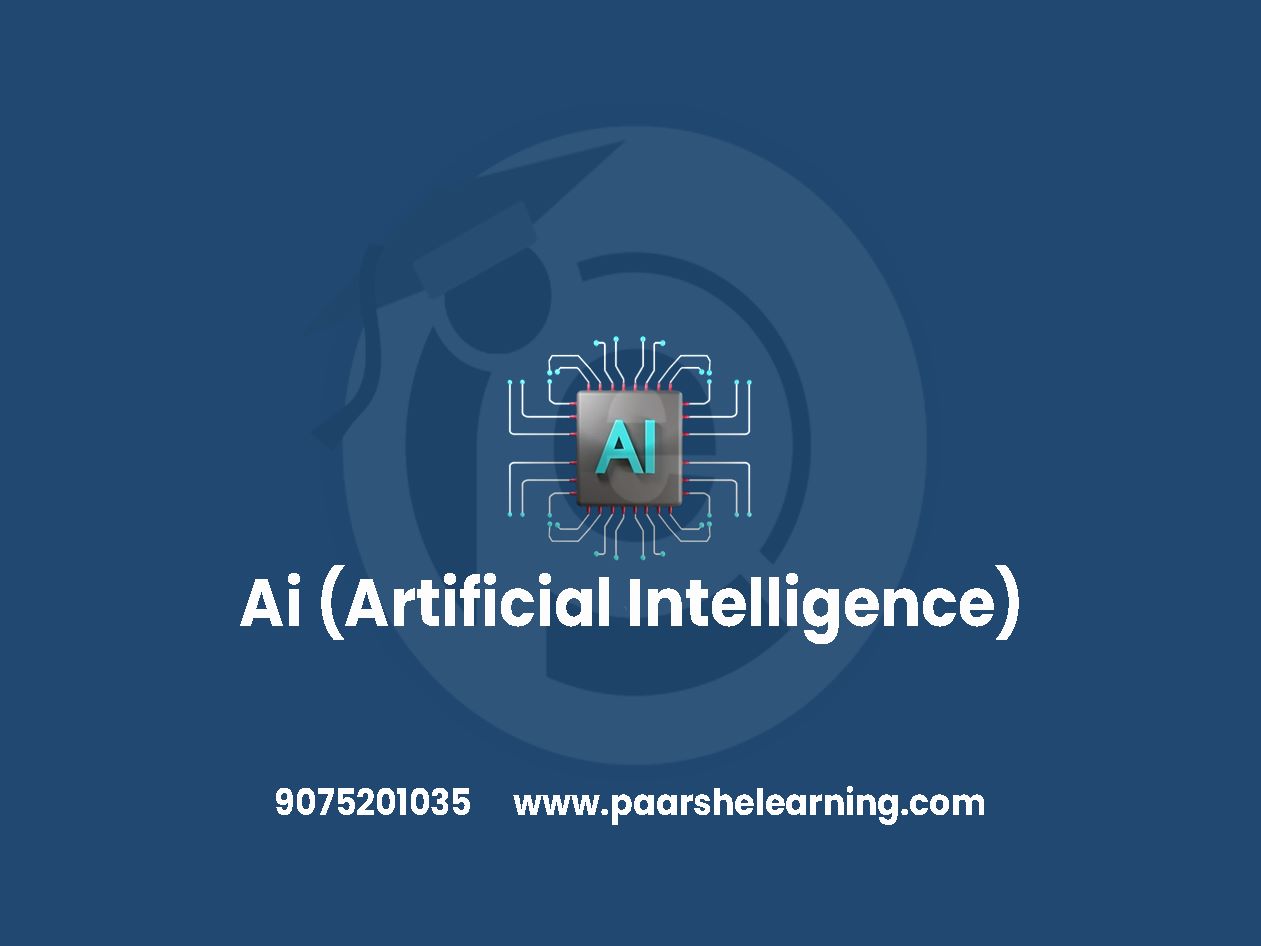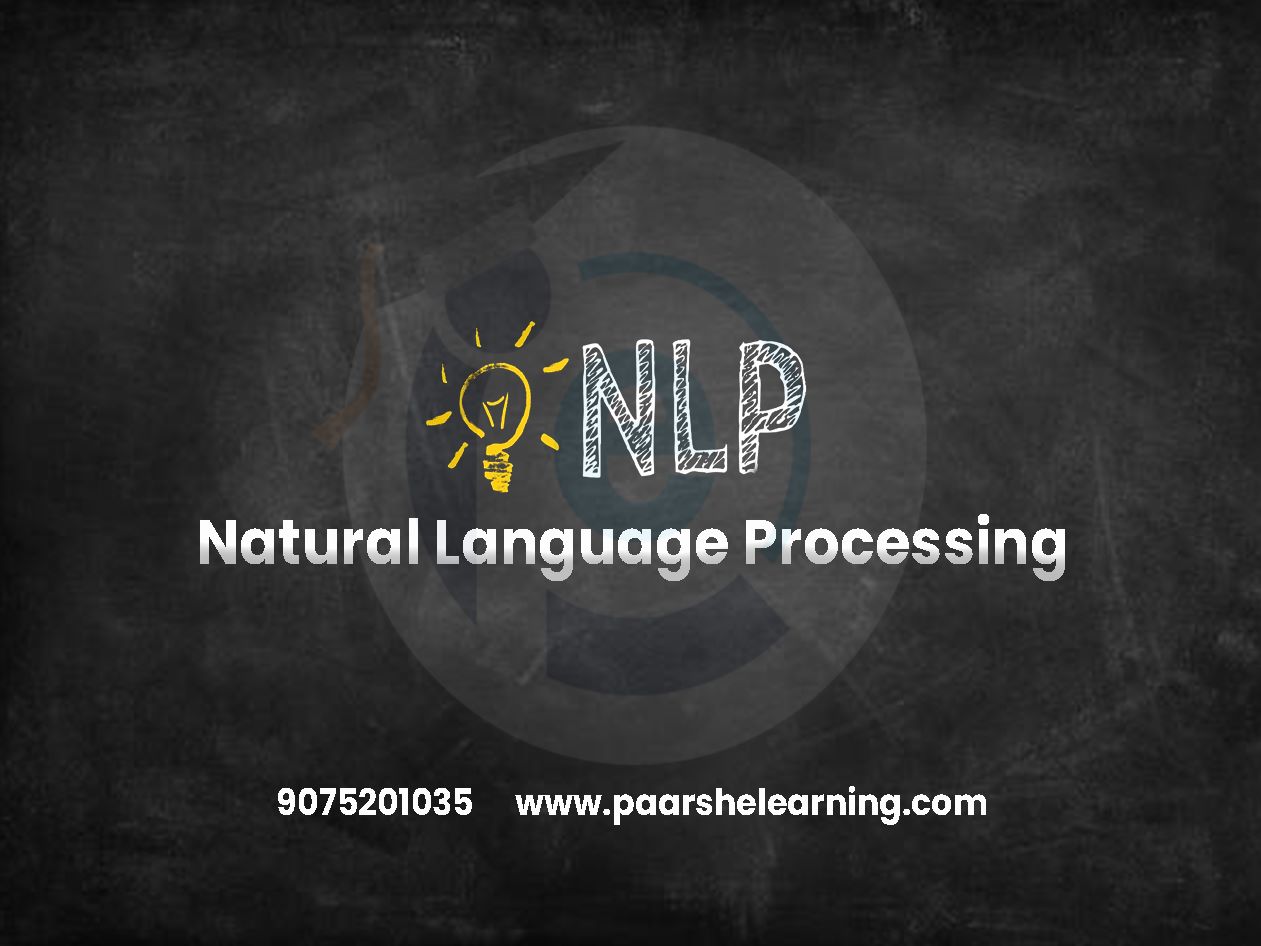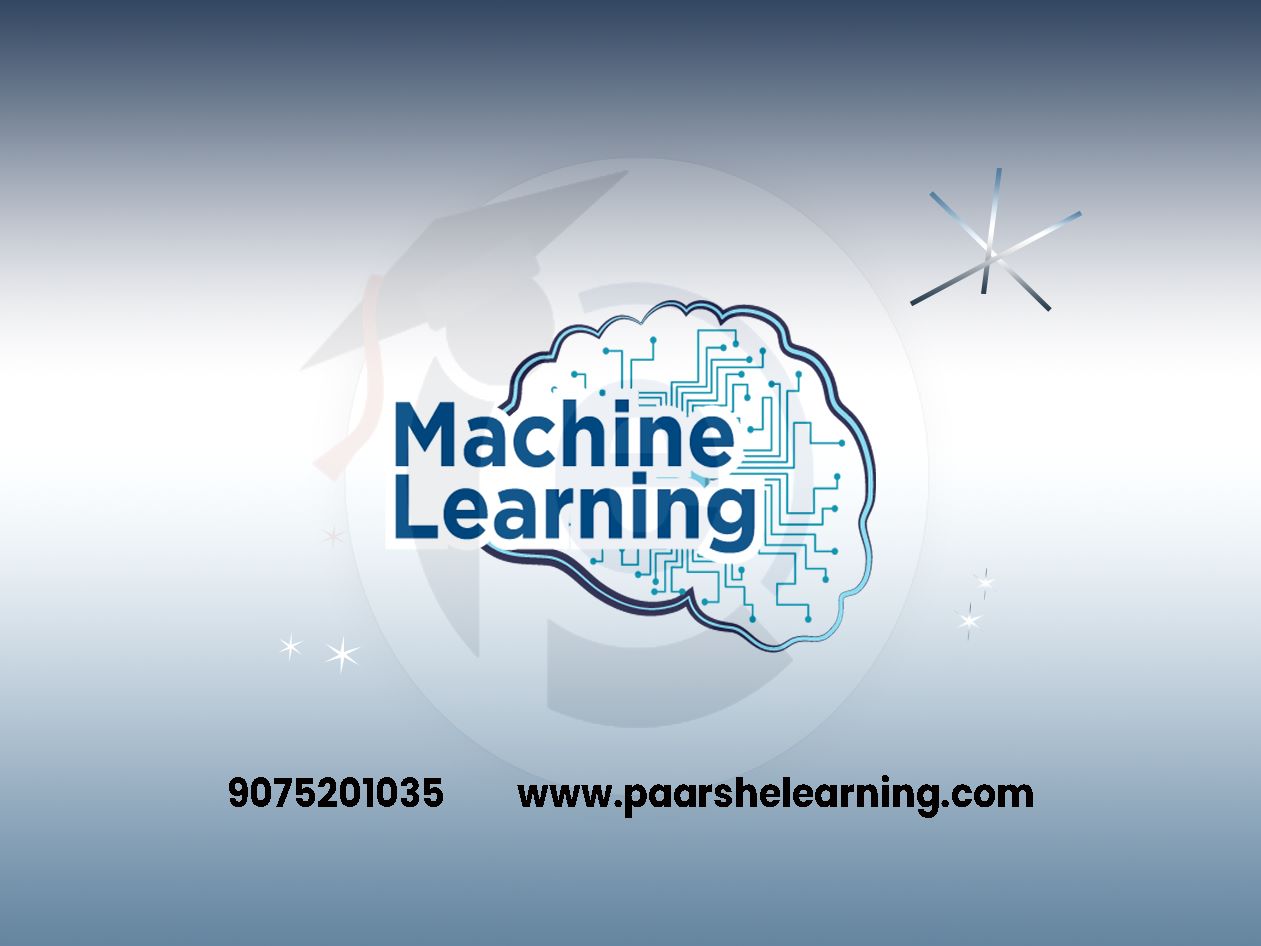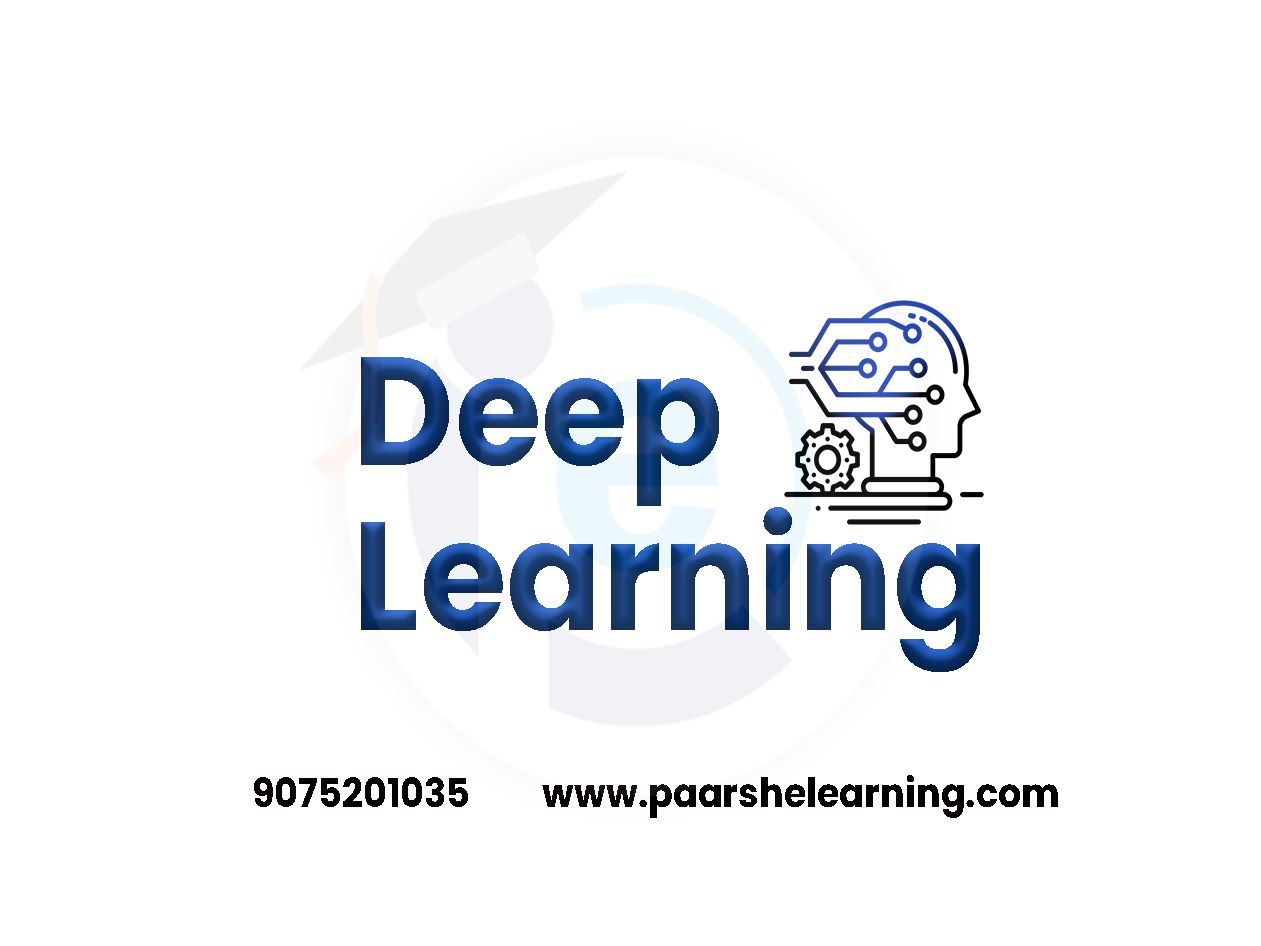- Daily Live session
- A recorded session with problem-solving material
- Access on Mobile and TV
- Certificate of completion
- Recommendation Letter
- 100% Job Placement
AI (Artificial Intelligence)
Course description
Machine Learning (ML) is a subfield of artificial intelligence (AI) that focuses on the development of algorithms and models that enable computers to learn and make predictions or decisions without being explicitly programmed. ML algorithms learn from data, identify patterns, and make predictions or take actions based on the patterns they discover. ML techniques are used in various applications such as image recognition, natural language processing, recommendation systems, and predictive analytics.
Here are some key concepts and techniques in Machine Learning:
-
Supervised Learning: In supervised learning, the ML algorithm learns from a labeled dataset, where each data point has a corresponding target or label. The algorithm learns to map input features to their corresponding output labels and can make predictions on new, unseen data based on this learned mapping. Common supervised learning algorithms include linear regression, logistic regression, decision trees, random forests, and support vector machines.
-
Unsupervised Learning: Unsupervised learning involves learning from unlabeled data, where the ML algorithm aims to discover patterns or structures in the data without explicit target labels. Clustering algorithms, such as k-means clustering and hierarchical clustering, are used to group similar data points together. Dimensionality reduction techniques, like principal component analysis (PCA) and t-SNE, are used to reduce the number of features while preserving important information.
-
Reinforcement Learning: Reinforcement learning involves training an ML model to interact with an environment and learn optimal actions through trial and error. The model receives feedback in the form of rewards or penalties based on its actions, and it learns to maximize cumulative rewards over time. Reinforcement learning is commonly used in robotics, game-playing, and autonomous systems.
-
Deep Learning: Deep Learning is a subset of ML that focuses on artificial neural networks with multiple layers. Deep learning algorithms, called deep neural networks, are capable of learning hierarchical representations of data and performing complex tasks like image and speech recognition. Convolutional Neural Networks (CNNs) are commonly used for image analysis, while Recurrent Neural Networks (RNNs) are suitable for sequential data, such as text or speech.
-
Feature Engineering: Feature engineering involves selecting, transforming, and creating relevant features from raw data to improve the performance of ML algorithms. Feature engineering plays a crucial role in ML as the quality and relevance of features directly impact the algorithm's ability to learn and make accurate predictions.
-
Model Evaluation and Validation: Evaluating and validating ML models is essential to assess their performance and generalization ability. Common techniques include splitting the dataset into training and testing sets, cross-validation, and using evaluation metrics like accuracy, precision, recall, F1 score, and mean squared error, depending on the problem type.
-
Deployment and Model Management: Once a model is trained and evaluated, it can be deployed in production environments to make predictions on new data. Deployment involves considerations such as model serving, scalability, monitoring, and retraining to ensure the model's ongoing performance and accuracy.
There are various libraries and frameworks available for implementing machine learning models, such as sci-kit-learn, TensorFlow, PyTorch, and Keras. These libraries provide pre-built algorithms and tools for data preprocessing, model training, and evaluation.
This course will cover the following topics:-
1. Natural Language Processing (NLP).
2. Artificial Neural Network (ANN).
3. Convolutional Neural Network (CNN).
4. Recurrent Neural Network. (RCN)
5. Machine Learning (ML).
6. Deep Learning (DL).
This course includes!
This course is for
- This course is for everyone who wants to master AI skills.
- This course is for students who have already good knowledge of machine learning and have good programming skills.
- Job-seekers, Software Engineers, and Data Scientists who want to level up their career
- Students and professionals who want to improve their training capabilities
- Machine Learning Engineer
- Anyone interested in Artificial Intelligence, Machine Learning, or Deep Learning
- etc...
Prerequisites for this course
- Basic Python Knowledge
Ai (artificial Intelligence) Syllabus
-
Introduction To Artificial Intelligence
Definition and history of AI AI applications in various fields Different types of AI: Narrow vs. General AI Ethical and societal considerations in AI development
-
Problem Solving And Search Algorithms
Problem-solving techniques in AI Uninformed search algorithms: BFS, DFS Informed search algorithms: A*, heuristics Local search algorithms: hill climbing, simulated annealing
-
Machine Learning Fundamentals
Understanding machine learning vs. traditional programming Supervised learning: Regression and classification Unsupervised learning: clustering and dimensionality reduction Cross-validation and model evaluation metrics
-
Neural Networks And Deep Learning
Basics of artificial neural networks Deep learning architectures: CNNs, RNNs Training neural networks: backpropagation, optimization Transfer learning and fine-tuning pretrained models
-
Natural Language Processing (nlp)
Introduction to NLP and its applications Text preprocessing: tokenization, stemming, etc. Sentiment analysis, text classification, and named entity recognition Introduction to language models and word embeddings
-
Knowledge Representation And Reasoning
Representing knowledge using logic Propositional and first-order logic Inference rules and resolution Knowledge graphs and semantic networks
-
Reinforcement Learning
Basics of reinforcement learning Markov decision processes (MDPs) Q-learning and policy gradients Applications of reinforcement learning
-
Ai Ethics And Future Trends
Ethical considerations in AI development and deployment Bias and fairness in AI algorithms Explainability and interpretability of AI models Current trends and future directions in AI research



